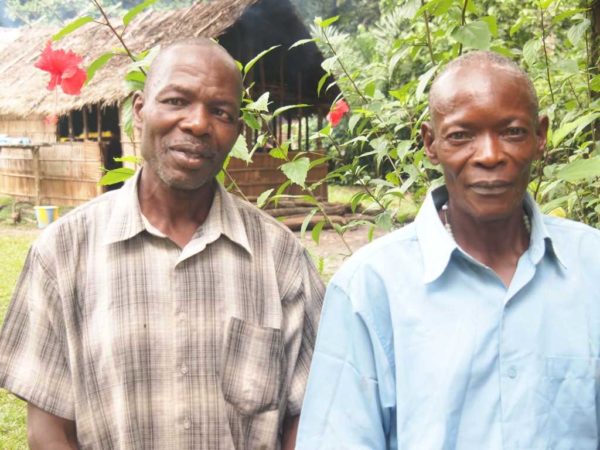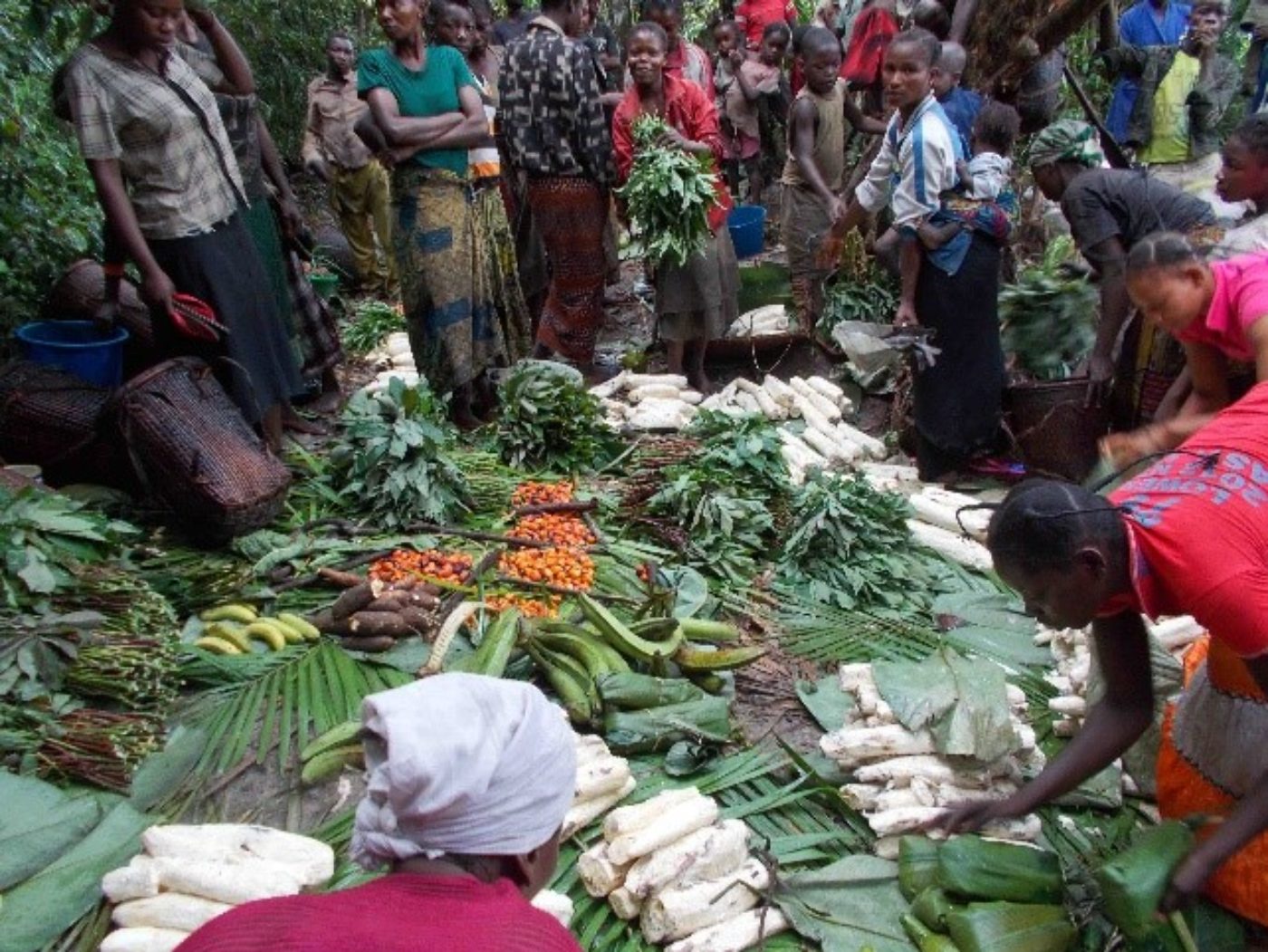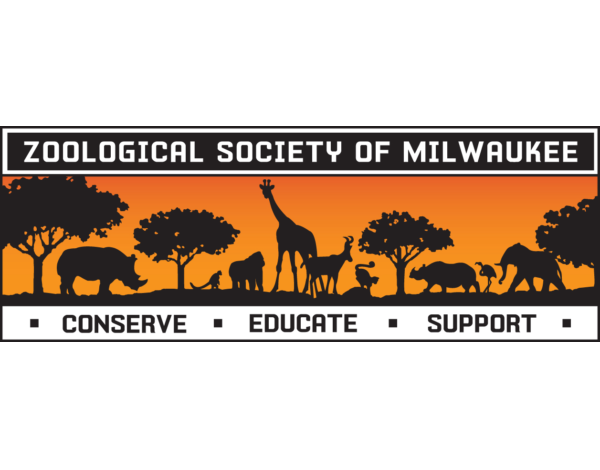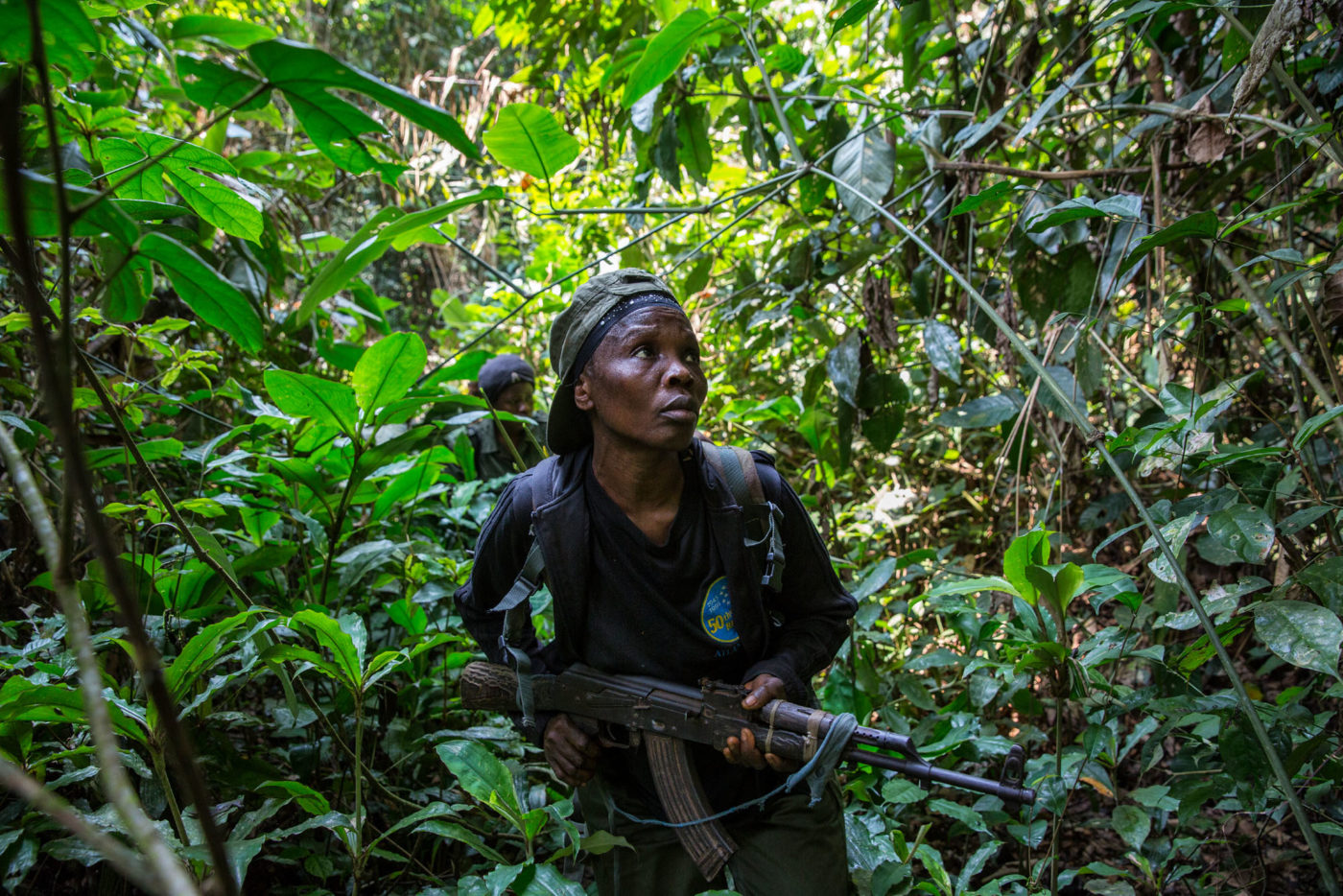Village elder recount
Tompoko, a small village of about 400 inhabitants, is cut off from main roads by swamps. Historically, the community had lived off hunting, fishing and small-scale agriculture. What eventually became the Salonga National Park in 1970 was their ancestral home.
Dimaro Ndombe, school director and farmer, and Mbuta Botuli, community leader and fisherman, recount the changes they witnessed in their village over 15 years of USAID support to the Salonga-Lukenie-Sankuru landscape.
The dark years
Dimaro recounts how a massive surge in military poaching between 1978 and 1985 left his community forests devoid of elephants, red river hogs and other game. In the early 2000’s the situation was very difficult: with little game available, the villagers lived in poverty. Moreover, their ancient crop varieties were prone to diseases. Their former little thatch school building had fallen apart and classes had not been taught in years.
Mbuta remembers well the establishment of Etate, a patrol post of the National Park on the Salonga River, just across from Tompoko. The patrol post was also a research station supported by the Zoological Society of Milwaukee (ZSM). Over the next three years, the villagers gradually started trading with the patrol post, selling their produce.

Tompoko community leaders Mbuta Botuli and Dimaro Ndombe
ZSM to the rescue
Village leaders approached ZSM, asking for assistance to re-build their school. By 2004, the Tompoko school was up and running again. For the next 15 years, ZSM would provide Tompoko with modest teacher salary support, blackboards, school books, chalk and notebooks. Because Etate is located far away from commercial centers, the Etate rangers needed a reliable, local source of food. This marked the beginning of a budding collaboration between Tompoko and the park.
In order to increase local agricultural yield, ZSM set up an agricultural program between 2006 and 2010, supported by the US Ambassador Self-Help Fund and USAID (CARPE), for Tompoko and seven other neighboring villages. The program organized the distribution and multiplication of improved crop varieties for staples such as manioc, rice, beans and peanuts. When Lotulo, a second nearby patrol post, was created in 2012, the market demand for guard rations doubled. The guaranteed market for patrol rations would become a yearly influx of $10,000 on average into Tompoko’s economy.
When asked whether it wouldn’t be better for Tompoko if the Salonga National Park would simply cease to exist so they could again have access to the park’s riches, Dimaro and Mbuta agree that they were indignant when their ancestral hunting and fishing grounds became off-limits because of the park’s creation. Over time, however, their views have become more pragmatic.
“When there is no park, there are no rangers, and ZSM is not here. We will have neither the market nor a school. Tompoko will be poor again, and our children illiterate. Everyone else from far away will enter our ancestral forest to hunt and fish, not just us. No, we cannot accept that the park will disappear! We would regret it if our children will never know elephants.”
Over the past 15 years, USAID has funded the Zoological Society of Milwaukee’s community outreach programs through its CARPE and CAFEC programs. ZSM currently supports schools in five villages, reaching over 500 children, as well as two adult literacy classes. In addition to educational outreach, ZSM supports three local markets that provide rations to patrol posts in the northern periphery of the Salonga National Park.



